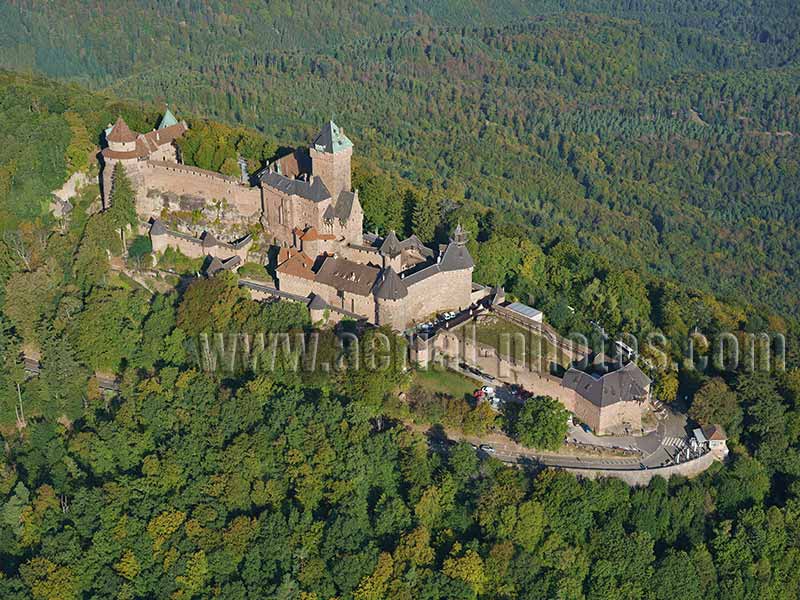
The Haut-Koenigsbourg Castle is located on a wooded summit in the eastern Vosges Mountains near the town of Sélestat. Perched on a natural sandstone promontory, at an altitude of 757 meters, the castle offers a strategic vantage point over the Plain of Alsace with the Rhine River which was a disputed frontier for centuries. This fortification is a sight to behold with its impressive longitudinal architecture, 270 meters in length. Orschwiller, Bas-Rhin, Alsace, Grand Est, France.

This site has been occupied by a castle at least since 1147 CE. The castle had known a tumultuous medieval period until 1633 during the Thirty Years’ War which left it in ruins. The current castle dates back to 1908, the year it was inaugurated by the German emperor Wilhelm II, who had commissioned its restauration. The emperor’s intention was to demonstrate the power of the newly formed empire: Alsace had become German in 1871 after the Franco-Prussian War. Orschwiller, Bas-Rhin, Alsace, Grand Est, France.
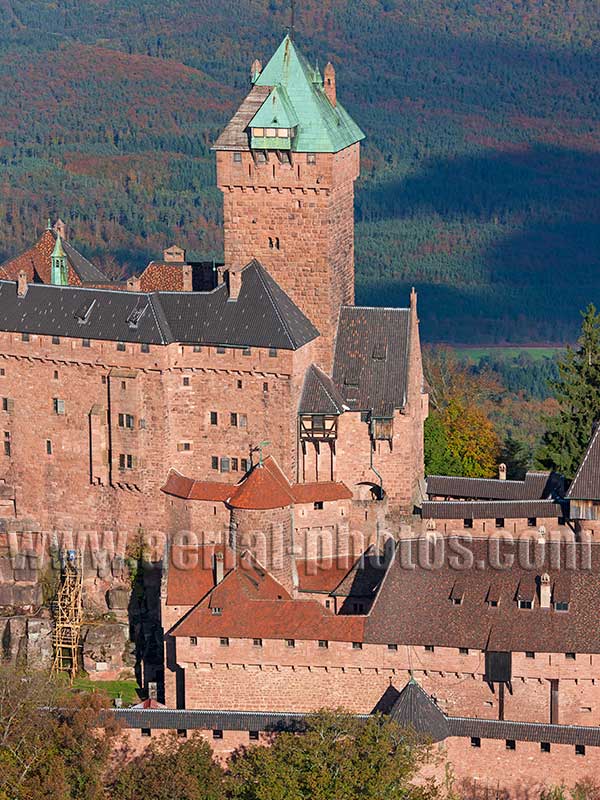
Built with the characteristic Vosges pink sandstone extracted from a nearby quarry, the Haut-Koenigsbourg Castle is an architectural marvel. With its imposing 62-meter-high donjon visible for miles around, the castle is a landmark of the Alsace region and one of France's most visited castles with more than 500,000 visitors every year. Because of its historical significance, the castle has been listed as a “monument historique” since 1862. Orschwiller, Bas-Rhin, Alsace, Grand Est, France.
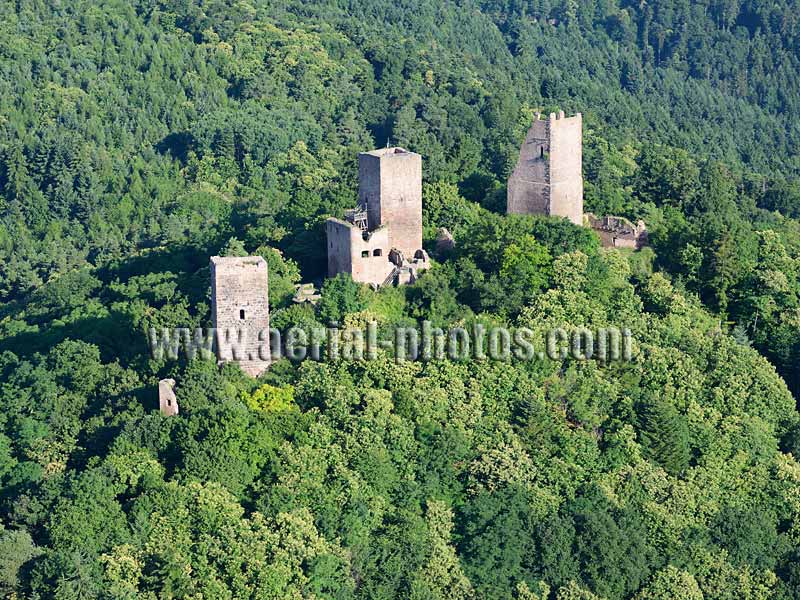
The Three Castles of Eguisheim (elevation: 591 meters) are built on the Schlossberg hill on the eastern Vosges Mountains, they overlook the Plain of Alsace to the east. The three donjons are (left to right) Weckmund (twelfth century), Wahlenbourg (eleventh century), and Dagsbourg (twelfth century). Actually, only the Castle of Dagsbourg is on the commune of Eguisheim, the other two are in Husseren-les-Châteaux. Haut-Rhin, Alsace, Grand Est, France.
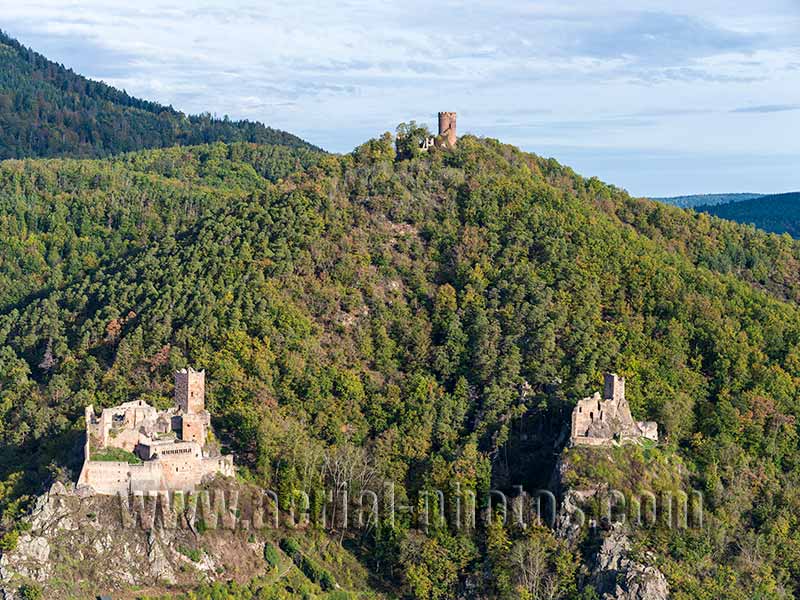
The Eastern Vosges Massif is a formidable playground for discovering its many castles, colorful medieval heritage built with the local pink sandstone in a natural setting of green woodland. More than eighty castles dot the landscape in a north / south axis dominating the Rhine Valley to the east. This moutain range has one of the highest density of castles in Europe. Here, above the city of Ribeauvillé, three castles flank the mountainside, with left to right, Saint-Ulrich, Haut-Ribeaupierre and Girsberg. Ribeauvillé, Haut-Rhin, Alsace, Grand Est, France.

The impressive ruins of Saint-Ulrich Castle are testimony to the power of the local lords who occupied the castle from the eleventh to the sixteenth century. Different architectural elements were added in that period. The castle was abandoned in the sixteenth century and listed on the national register of historic monuments in 1841. Ribeauvillé, Haut-Rhin, Alsace, Grand Est, France.
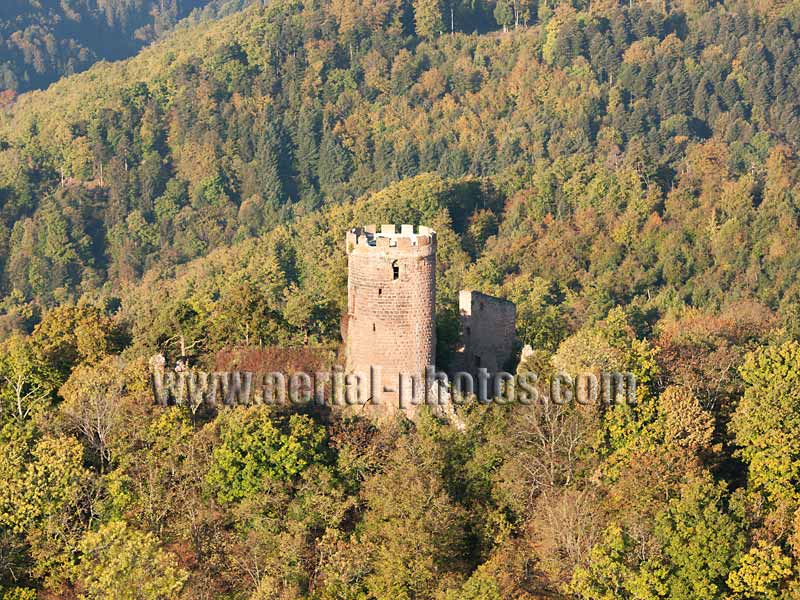
Located at an elevation of 642 meters on the Vosges Mountains, the Haut-Ribeaupierre Castle is the highest of the three castles of Ribeauvillé. The first mention of a castle was in the 11th century. The castle we see today is believed to have been built around the 13th century. It served as a watchtower and a prison. Famous people were imprisoned in the castle such as John Harleston, an English knight who had been arrested while traveling in the area despite having an imperial safe-conduct to move around. Imprisoned in 1384, he regained his freedom in 1387 when a ransom was paid. The castle was abandoned in the 16th century. Ribeauvillé, Haut-Rhin, Alsace, Grand Est, France.

The Ortenbourg Castle is a thirteenth-century medieval fortress built on a rocky outcrop on the eastern Vosges Mountains. The peculiarity of this granit-made structure is its 32-meter-high pentagonal donjon, which is partially enveloped by a proctective high wall facing the mountainside. Scherwiller, Bas-Rhin, Alsace, Grand Est, France.
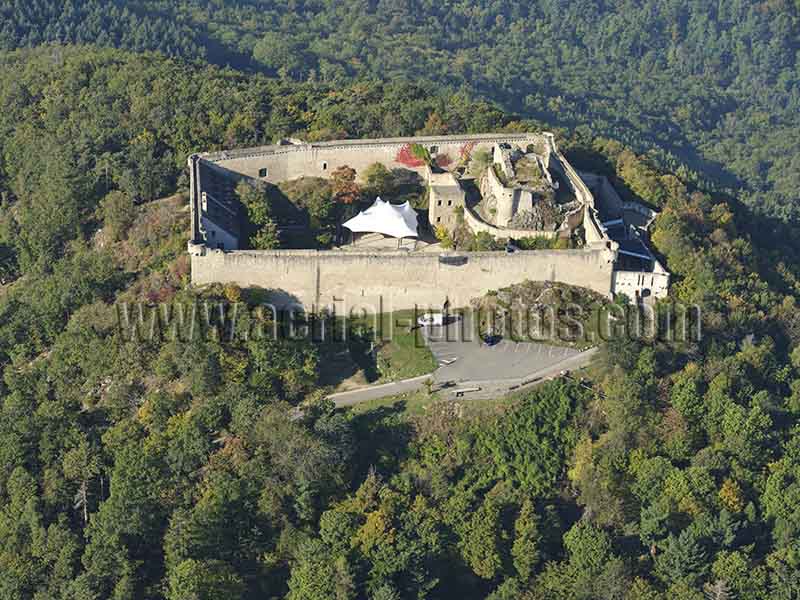
Strategically located on a hilltop, approximately 400 meters above the Plain of Alsace, stands the Hohlandsbourg Castle. This castle of historical significance was built in the late thirteenth century. Historic artifacts dating back as early as 1300 BCE have been found on this site. Wintzenheim, Haut-Rhin, Alsace, Grand Est, France.
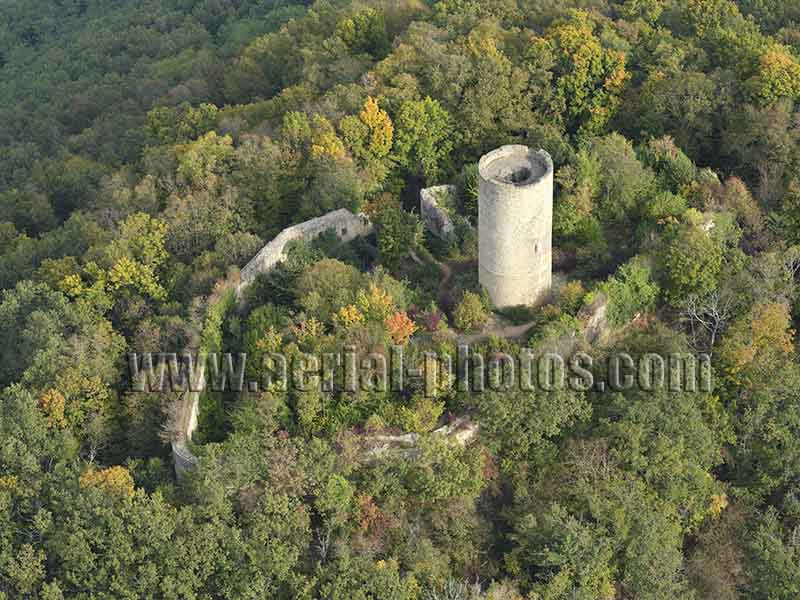
There is uncertainty as to when Pflixbourg Castle was built, possibly in the early thirteenth century. It is located on a hilltop, approximately 200 meters above the Fecht Valley. It was built with granit coming from the leveled summit where it stands. Within the pentagonal wall stands a 23-meter-tall bergfried. Unlike a keep, a bergfried has no window and is not designed for permanent habitation. The castle is listed on the national register of historic monuments since 1968. Wintzenheim, Haut-Rhin, Alsace, Grand Est, France.
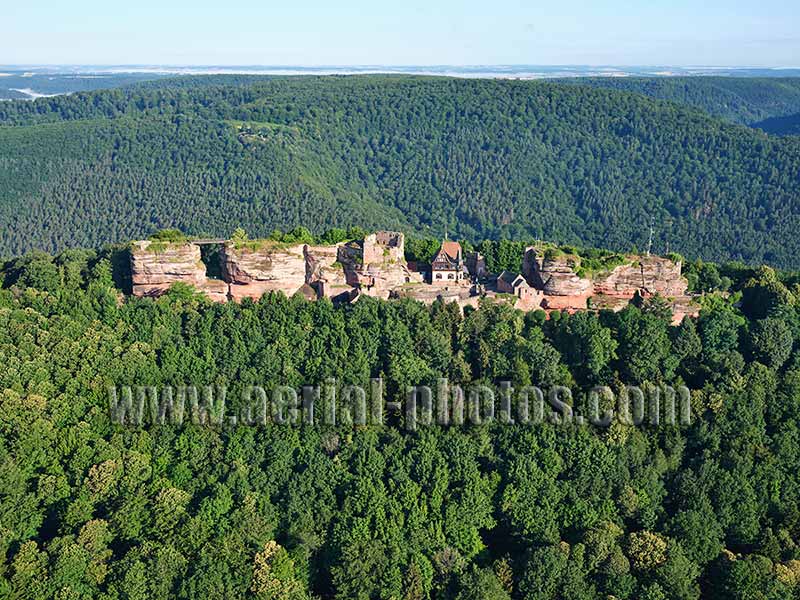
The Haut Barr Castle is a fortification from the late 12th Century. The ruin we see today dates back to the 16th Century. It is built on three separate sandstone buttes spanning a total length of approximately 210 meters. Because of its commanding view of the Plain of Alsace, the castle has been historically nicknamed the “Eye of Alsace.” Saverne, Bas-Rhin, Alsace, Grand Est, France.

Nestled between two impressive sandstone buttes stands a half-timbered building from the 1900s. It is a restaurant where guests can have a traditional Alsatian meal in a room with a breathtaking view of the Plain of Alsace; overnight accommodations can also be provided. To the right of the restaurant, there is a chapel from the 12th Century dedicated to St. Nicholas. Saverne, Bas-Rhin, Alsace, Grand Est, France.

The history of Lichtenberg Castle can be traced back as early as 1206 when it was the property of the Lords of Lichtenberg. In the late 16th Century, the castle underwent a new phase of construction to reinforce its defensive system. In 1678, the castle was seized by King Louis XIV’s troops. In 1870, the castle was bombed and burned by Prussian troops and the following year, the area came under the control of the newly formed German Empire. In 1918, the Alsace and Moselle regions were returned to France. In the 1990s, the castle, which had been left in ruins since 1870, was restored. Bas-Rhin, Alsace, Grand Est, France.
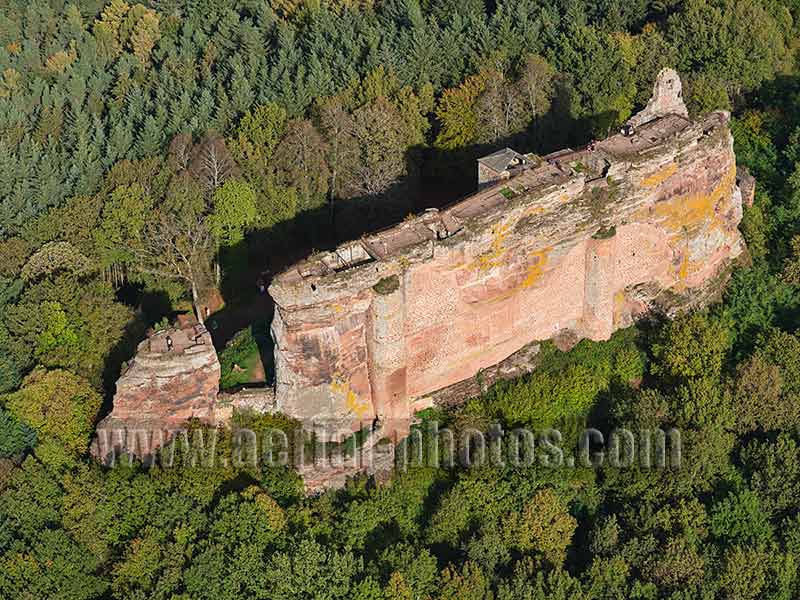
The Castle of Fleckenstein, built on a tall, long and incredibly narrow sandstone butte is quite a sight viewed from the air as it appears as a ship floating above the canopy. It dates back to the 12th Century, and was destroyed in the late 17th Century by Louis XIV’s soldiers and left in ruins. Listed as a Historic Monument in 1898, it is now a major tourist attraction in the northern Vosges Mountains. Lembach, Bas-Rhin, Alsace, Grand Est, France.

The Hohenbourg Castle is a fortification at the top of the Schlossberg at an elevation of 551 meters. The first castle is thought to date from the middle of the 13th Century. In 1522, the castle is acquired by François de Sickingen who reinforced it to better cope with the advances of the artillery. The following year, François de Sickingen dies and his castle is besieged and set on fire by his enemies. François de Sickingen’s son recovers the ruins and rebuilds a new castle. In 1680, the castle is destroyed again, this time by Montclar's troops under the order of Louis XIV; it has been left as ruins ever since. Wingen, Bas-Rhin, Alsace, Grand Est, France.

Waldeck Castle is believed to date back to the late 13th Century. It stands visibly at the top of a small sandstone outcrop in a sparsely populated area of the Northern Vosges Regional Nature Park. The ruins of Waldeck Castle are listed as a historic monument since 1930. Éguelshardt, Moselle, Grand Est, France.
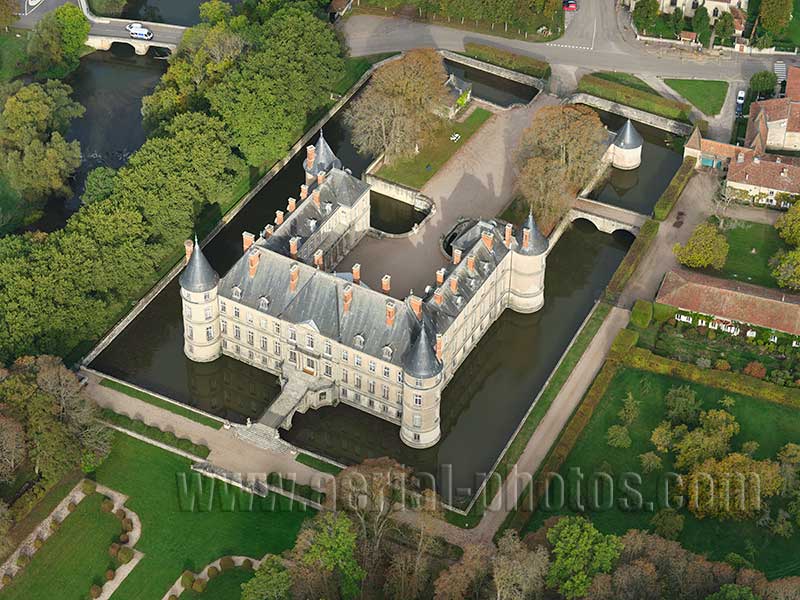
Haroué Castle, also known as Château of the Beauvau-Craon, was built between 1720 and 1729 by the architect Germain Boffrand for Marc de Beauvau, a nobleman from the historic Duchy of Lorraine. It is worth noting how time is symbolized by the architecture; the castle has 365 windows, 52 fireplaces, 12 towers (including those inside the castle) and 4 bridges. The castle is listed as a historic monument since 1983. The castle is still owned by the Beauvau-Craon family and was open to the public in 2021 through the center of national monuments. Haroué, Meurthe-et-Moselle, Grand Est, France.

Bourlemont Castle is a medieval fortification whose origins date back to the early 12th century. In the middle of the 13th century, Geoffroy de Bourlemont undertook some expansion works with the construction of the round towers and the thick walls between them. Other architectural elements were added in the early 16th century. Joan of Arc, born in Domrémy-la-Pucelle, a village a few kilometers to the north, roamed the woods surrounding the castle in her youth. The castle is located on a promontory above the Meuse Valley, hidden here by the early morning fog. Frebécourt, Vosges, Grand Est, France.
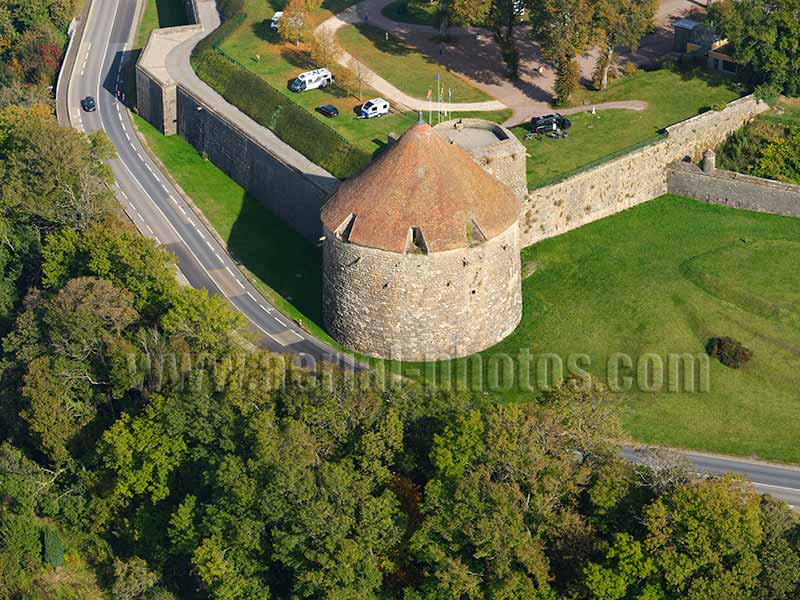
Langres is a picturesque medieval walled town, its most impressive feature is the Tower of Navarre, an artillery tower built in the early 16th century. It has a diameter of 28 meters and its walls have a thickness of 7 meters. In 1825, the tower was converted into a powder tower (for storing gunpowder). Langres is one of “the most beautiful detours of France,” this label, to promote tourism, is given to towns worth of interests that are outside the main touristic areas and are worth the extra driving. Travellers can pitch up their tents behind this historic landmark. Langres, Haute-Marne, Grand Est, France.


















